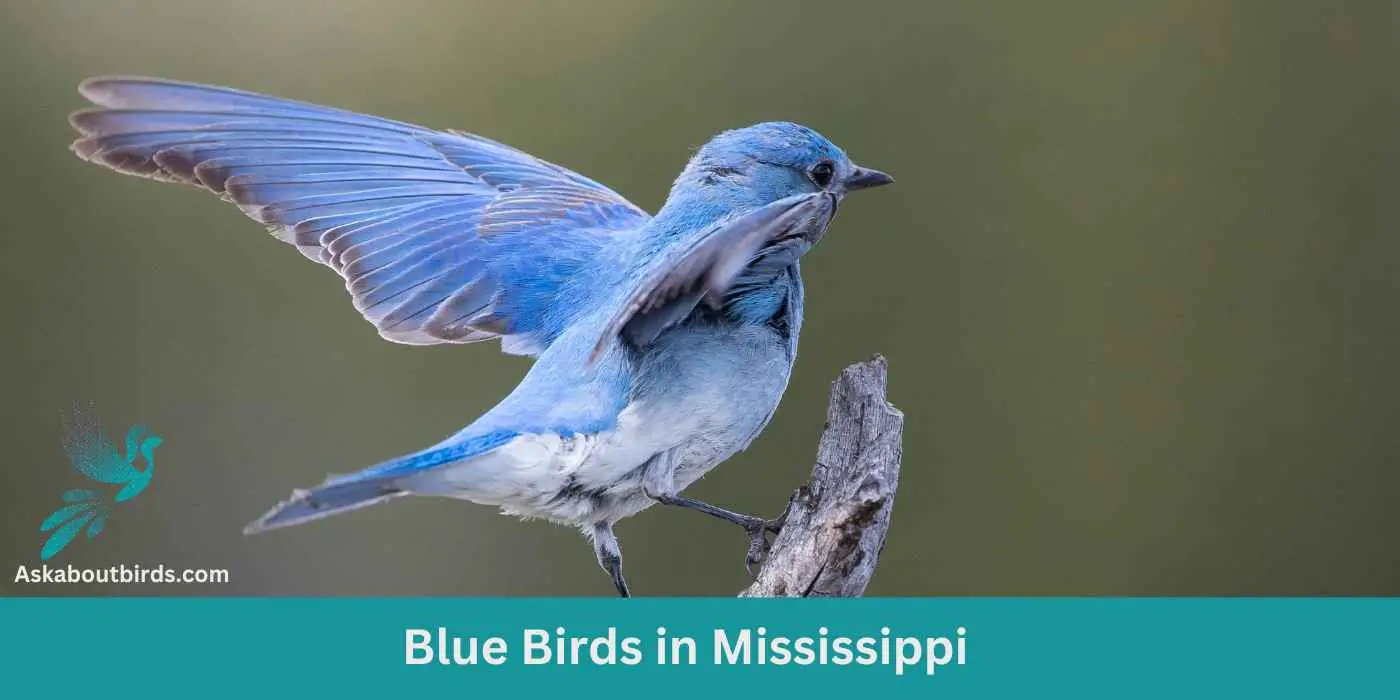Welcome to the comprehensive guide on blue birds in Mississippi! The Magnolia State, with its lush forests, sprawling river systems, and diverse habitats, is home to a vibrant array of bird species, including some of the most enchanting blue birds you could ever hope to see.
In this guide, we will delve into the fascinating world of the 14 different species of blue birds that grace the skies and woodlands of Mississippi.
Blue Birds Found In Mississippi
The geography of Mississippi plays a crucial role in the diversity of blue bird and species found in the state. The Mississippi River, one of the longest in the world, runs through the state, creating a range of habitats including swamps, marshlands, and hardwood forests.
These diverse habitats provide ideal nesting and feeding grounds for a multitude of bird species, including a variety of blue birds. The state’s location along the migratory paths of many birds makes it a temporary home for several species throughout the year. The combination of resident and migratory birds contributes to the rich avian biodiversity of Mississippi.
Eastern Bluebird
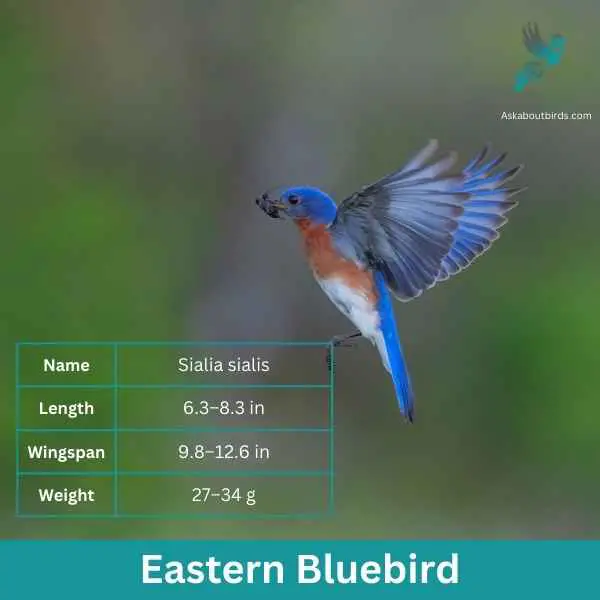
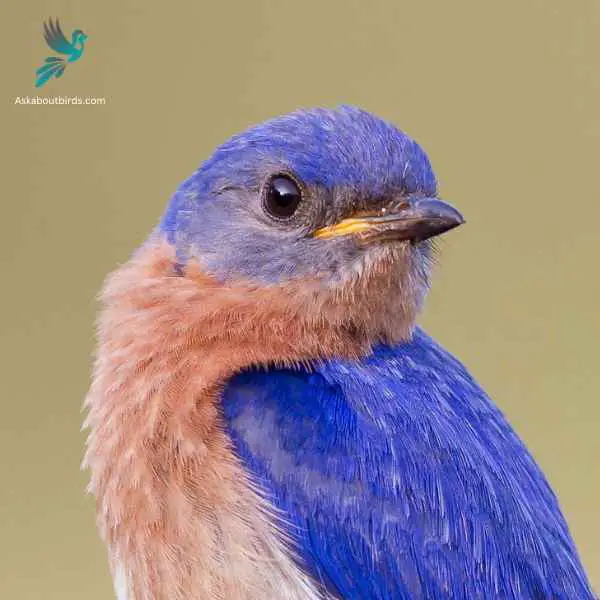
| Feature | Measurement |
|---|---|
| Scientific Name | Sialia sialis |
| Length | 6.3–8.3 in |
| Wingspan | 9.8–12.6 in |
| Weight | 27–34 g |
The Eastern Bluebird (Sialia sialis) is a small thrush found in open woodlands, farmlands, and orchards, and is recognized for its vibrant blue and red coloration. Male Eastern Bluebirds are dazzling with bright blue upperparts and a rusty or brick-red throat and breast, while females, though less colorful, still offer a similar pattern. The bird is native to North America and is commonly seen east of the Rockies, from Canada to the Gulf States and southeastern Arizona to Nicaragua.
Eastern Bluebirds feed on insects, wild fruit and berries. They have a gentle nature and are often seen perched alone or in small groups in the open, scanning the ground for prey. They are cavity nesters and will use old woodpecker holes or birdhouses if they are the right size.
Western Bluebird
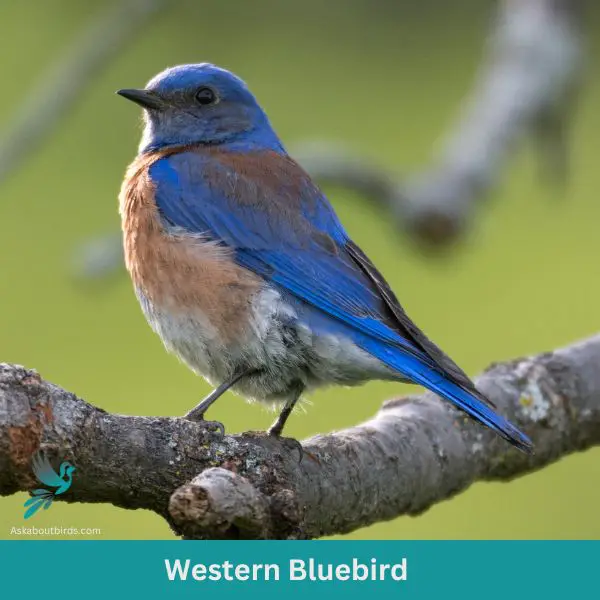
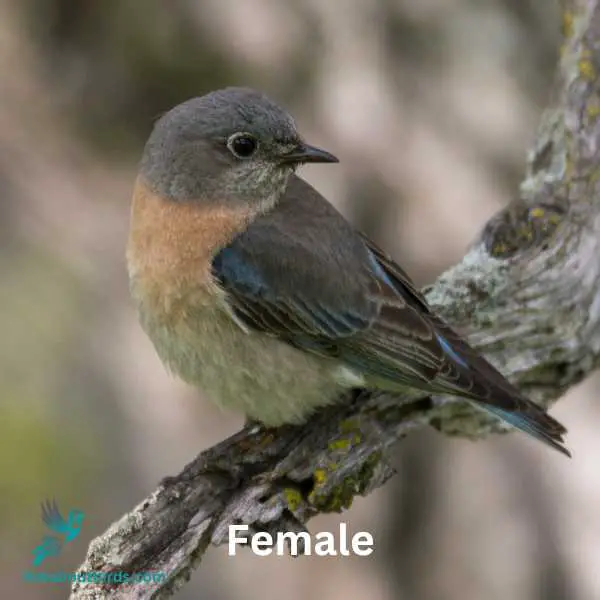
| Trait | Western Bluebird |
|---|---|
| Scientific Name | Sialia mexicana |
| Length | 5.5-7 inches |
| Wingspan | 11-13 inches |
| Weight | 0.8-1.1 ounces |
The Western Bluebird is a charismatic bird, appreciated for its vivid coloring and melodious song, commonly observed in open woodlands and meadows of the West.
Appearance: The male Western Bluebird sports a dark blue head, throat, wings, and tail with an orange breast and sides, transitioning into a grayish belly. Females are more muted, displaying grayish-blue wings and tail with a more subdued orange wash on the chest.
Diet: Western Bluebirds predominantly feed on insects, complemented by berries and fruits when available. They hunt by perching and then diving to the ground to capture their prey, and they’re also known to catch insects in mid-air.
Reproduction: These birds often utilize natural tree cavities or nest boxes for breeding. The female builds a loose nest inside and lays a clutch of 4-6 pale blue eggs.
Mountain Bluebird
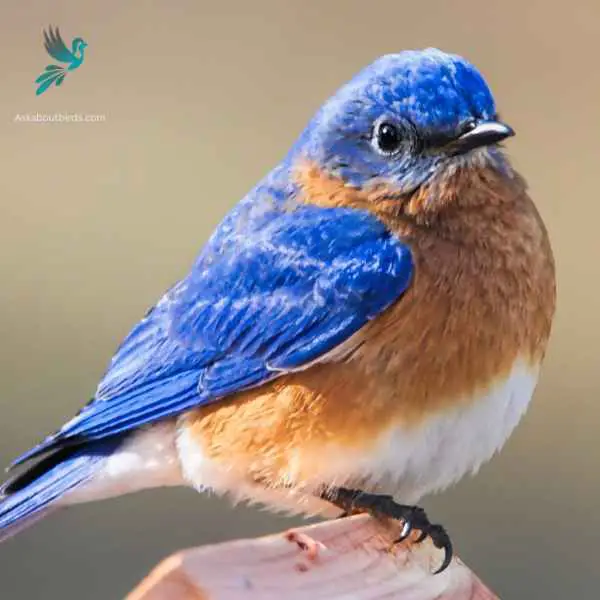
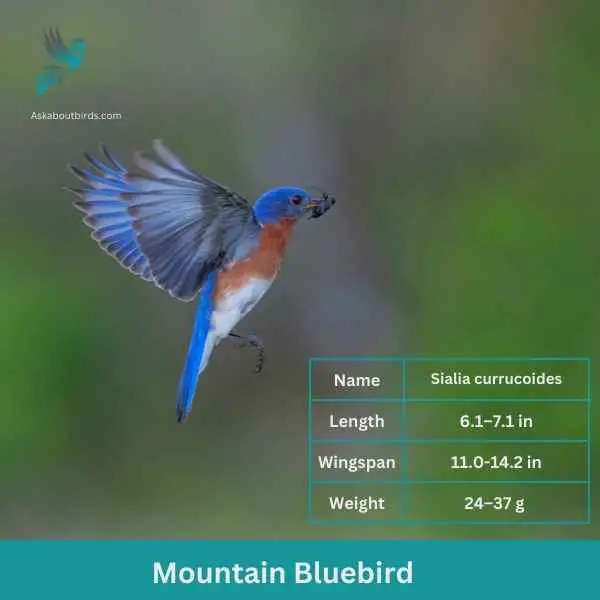
| Feature | Measurement |
|---|---|
| Scientific Name | Sialia currucoides |
| Length | 6.1–7.1 in |
| Wingspan | 11.0-14.2 in |
| Weight | 24–37 g |
The Mountain Bluebird is a small bird found in open grasslands and rocky mountains of North America. It is known for its stunning blue plumage, which is particularly vibrant in males. Females, on the other hand, have a more subdued blue coloration with hints of gray. These birds have slender bodies and a slightly curved bill, adapted for catching insects on the wing.
Mountain Bluebirds are insectivores, feeding primarily on insects such as beetles, grasshoppers, and spiders. They are skilled aerial hunters, capable of capturing their prey in mid-flight. During breeding season, these birds build their nests in tree cavities or man-made nest boxes, where females lay a clutch of eggs. The male bluebird actively participates in nest-building and provides food for the female during incubation.
Blue Jay

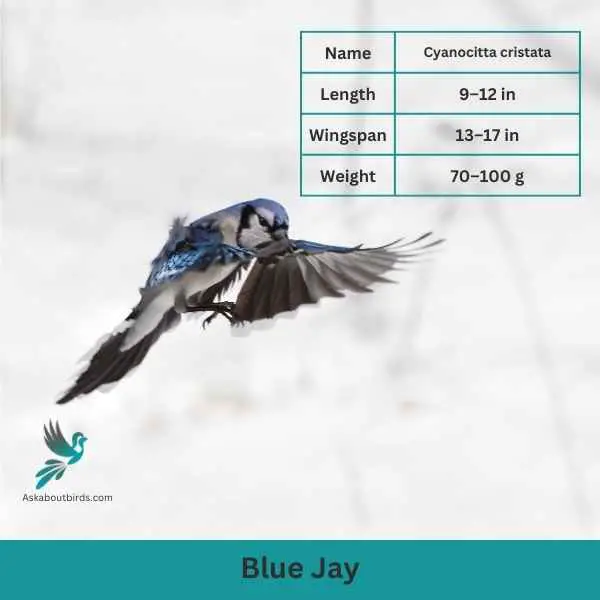
| Feature | Measurement |
|---|---|
| Scientific Name | Cyanocitta cristata |
| Length | 9–12 in |
| Wingspan | 13–17 in |
| Weight | 70–100 g |
The Blue Jay is a vibrant and easily recognized bird, known for its intelligence, distinctive calls, and bold behavior, commonly found throughout the eastern and central United States.
Appearance: The Blue Jay sports a striking blue upper body with white and black markings. Its face has a pronounced white patch with a black necklace that runs across the throat and around the head. The bird also features a pronounced blue crest, which can be raised or lowered, and its wings and tail are brightly colored with black bars and white tips.
Diet: Blue Jays are omnivores. Their diet consists primarily of seeds, nuts, especially acorns, fruits, and small insects. They’ve also been known to eat eggs or nestlings of other birds occasionally. Blue Jays often store food items in caches to eat later.
Reproduction: Blue Jays are monogamous birds that form long-lasting pair bonds. They typically build their nests in trees or large shrubs, constructing them from twigs, grass, and sometimes using mud as a binder. The female lays a clutch of 3 to 6 eggs, which are pale blue or sometimes white with brown speckles.
Florida Scrub-Jay
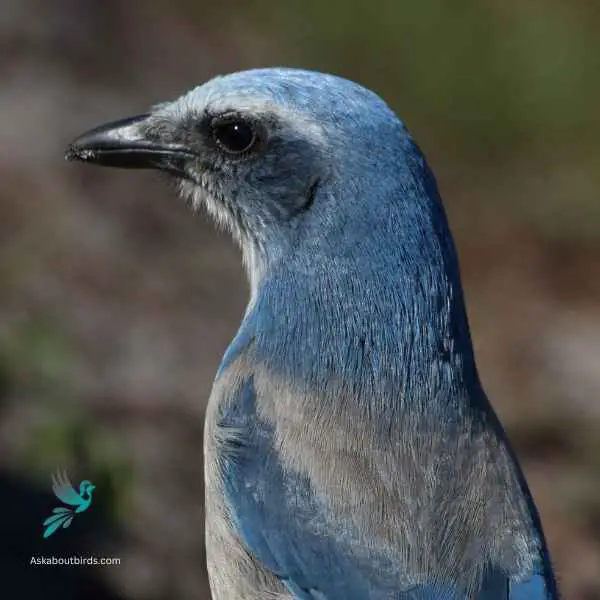
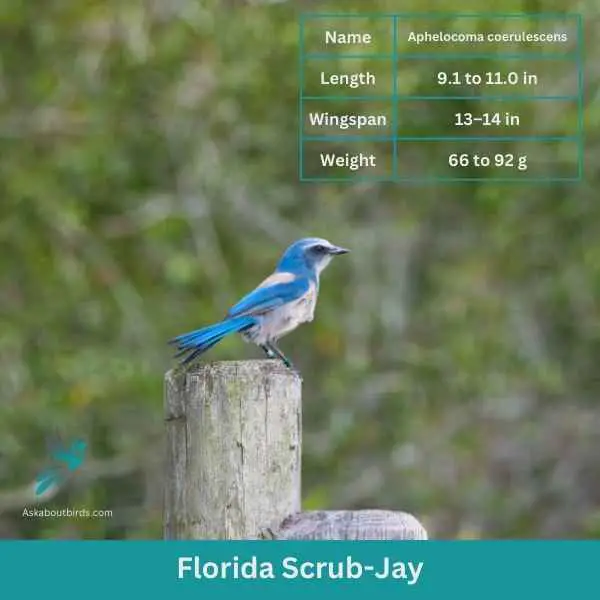
| Feature | Measurement |
|---|---|
| Scientific Name | Aphelocoma coerulescens |
| Length | 9.1 to 11.0 in |
| Wingspan | 13–14 in |
| Weight | 66 to 92 g |
The Florida Scrub-Jay is a striking, cooperative-breeding bird endemic to the sandy scrublands of Florida. It stands out as the only species of bird restricted entirely to the state of Florida.
Appearance: The Florida Scrub-Jay exhibits a bright blue head, wings, and tail, contrasting with its pale gray underbelly and nape. Its stout bill, legs, and eyes are black. Unlike other jays, it lacks a crest on its head.
Diet: Primarily, the diet of the Florida Scrub-Jay consists of a variety of insects and small animals, seeds, and especially acorns. They have a unique behavior of storing thousands of acorns, burying them in the ground as a food reserve for the lean winter months.
Reproduction: These jays are monogamous and often form family groups. They typically nest in shrubs or low trees. The nest, built primarily by the female, is made of twigs and lined with fine plant material. The female lays a clutch of 3 to 4 eggs, which are pale greenish or bluish and spotted with brown.
Western Scrub-Jay
Scientific Name: Aphelocoma californica
Length: 11.5-12.2 in (29-31 cm)
Wingspan: 15.0-16.1 in (38-41 cm)
Weight: 2.8-3.5 oz (80-100 g)
The Western Scrub-Jay is a medium-sized, intelligent bird known for its bold behavior and striking blue-and-gray plumage.
Appearance: Both male and female Western Scrub-Jays have a similar appearance, featuring a blue head, black wings, and tail, a grayish-brown back, and a pale gray underbelly. The throat is white with a blue necklace.
Diet: The diet of the Western Scrub-Jay is quite varied, consisting of insects, fruits, seeds, and nuts. They are also known to eat eggs and nestlings of other birds as well as scraps of human food.
Reproduction: Western Scrub-Jays typically nest in trees or shrubs. The female builds the nest and lays a clutch of 3 to 6 eggs, which are pale green or bluish-green in color. The female incubates the eggs and takes the lead in feeding the chicks, although the male may assist in feeding as well.
Steller’s Jay
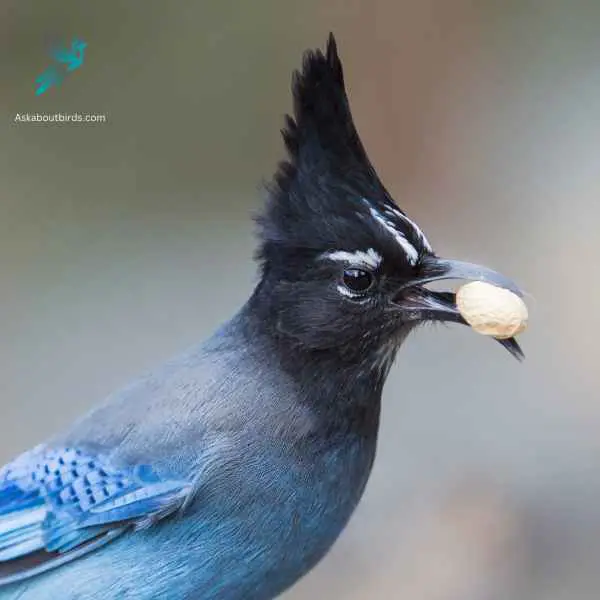

| Feature | Measurement |
|---|---|
| Scientific Name | Cyanocitta stelleri |
| Length | 12–13 in |
| Wingspan | 45 to 48 cm |
| Weight | 45 to 48 cm |
The Steller’s Jay is a charismatic and easily recognizable bird found mainly in the coniferous forests of the western North America, known for its bold behavior and loud, varied calls.
Appearance: The Steller’s Jay has a striking color contrast with a deep blue body and wings and a blackish head and upper body. One of its most distinguishing features is the tall, dark crest on its head, which can be raised or lowered depending on the bird’s mood. Its eyes are dark and its beak is strong and black.
Diet: The Steller’s Jay is omnivorous. It feeds on a wide range of items, from seeds, nuts, and berries to insects and small animals. It’s also known to raid campsites and picnics, often scavenging for human food.
Reproduction: Steller’s Jays form monogamous pairs that often remain together for several years. They typically build their nests in coniferous trees, made from twigs, moss, and other plant materials. The female lays a clutch of 2 to 6 eggs, which are usually pale green or blue with brown spots.
Blue Grosbeak
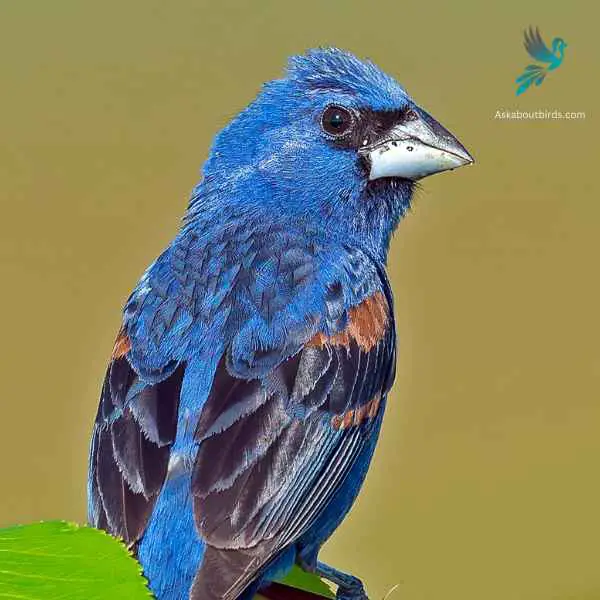

| Feature | Measurement |
|---|---|
| Scientific Name | Passerina caerulea |
| Length | 5.5 to 7.5 in |
| Wingspan | 10 to 11 in |
| Weight | 26 to 31.5 g |
The Blue Grosbeak is a medium-sized songbird found in North and Central America. The male Blue Grosbeak displays stunning plumage with deep blue feathers on its body and head, while the female has more subdued brownish tones. Both sexes have a thick, conical bill, which gives them their name “grosbeak,” meaning large beak.
These birds prefer open habitats such as grasslands, brushy areas, and woodland edges. Blue Grosbeaks are known for their melodious songs, which consist of a series of rich and varied notes. They primarily feed on seeds and insects, using their strong beaks to crack open seeds and forage on the ground or in low vegetation.
Indigo Bunting


| Feature | Measurement |
|---|---|
| Scientific Name | Passerina cyanea |
| Length | 4.5–5.1 in |
| Wingspan | 7.1–9.1 in |
| Weight | 11.2–21.4 g |
The Indigo Bunting is a strikingly vibrant songbird, often hailed for its brilliant blue plumage and melodic song that graces woodlands and meadows during the warmer months.
Appearance: Males are renowned for their bright indigo blue feathers, which can appear darker in certain lights. Females and juveniles, on the other hand, are brown with subtle hints of blue on their wings and tail. The species lacks the vibrant streaking or spotting commonly found in many other songbirds.
Diet: Indigo Buntings primarily subsist on seeds, especially during non-breeding seasons. During the breeding season, they also consume a variety of insects such as beetles, caterpillars, and spiders, providing essential protein for their growing chicks.
Reproduction: Indigo Buntings build their nests close to the ground in shrubs or low tree branches. These nests, crafted meticulously with grasses and other plant materials, cradle clutches of typically 3 to 4 eggs. After hatching, the young are fed by both parents until they’re ready to fledge.
Lazuli Bunting
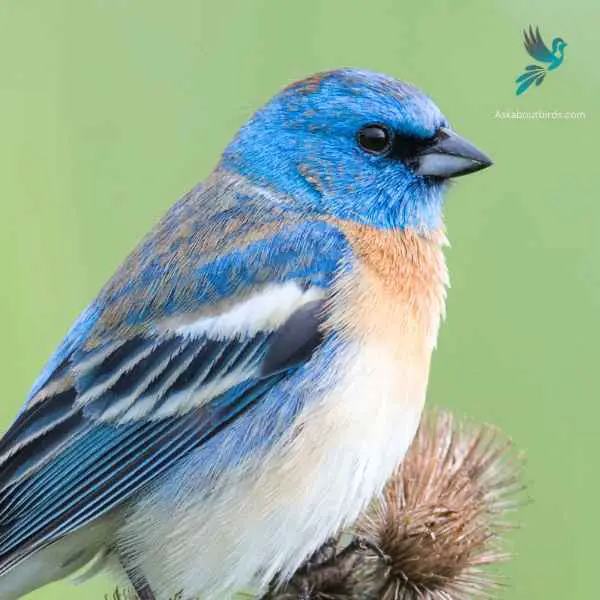

| Feature | Measurement |
|---|---|
| Scientific Name | Passerina amoena |
| Length | 5.1-5.9 in |
| Wingspan | 8.7 in |
| Weight | 13-18 g |
The Lazuli Bunting is a vibrant songbird recognized for its brilliant colors and melodious song, frequently seen in brushy areas and woodlands during the summer months.
Appearance: The male boasts a dazzling bright blue head and back, offset by a white belly and rust-orange breast. Females and immature birds present a more muted brownish hue overall, with a hint of blue on the wings and tail.
Diet: Lazuli Buntings primarily feed on seeds, but during the breeding season, they’ll also consume insects. Their strong, conical beaks are perfectly adapted for seed-cracking.
Reproduction: The female Lazuli Bunting constructs a cup-shaped nest using grasses, twigs, and other fine materials, often placing it in a shrub or low tree. She typically lays a clutch of 3-4 pale blue or white eggs.
Cerulean Warbler
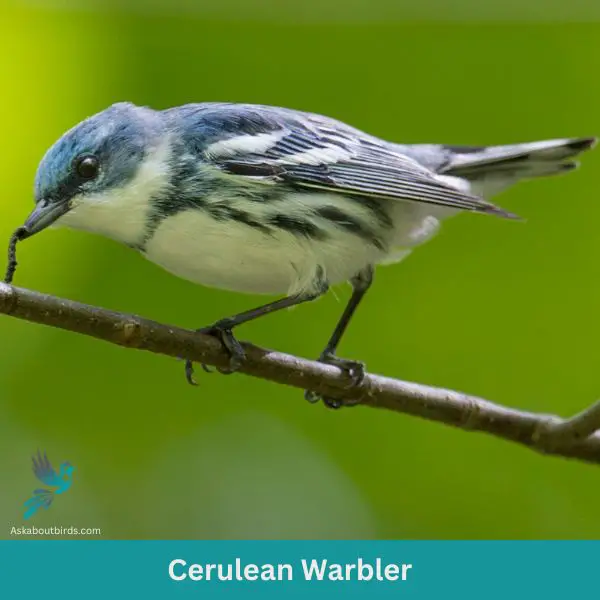
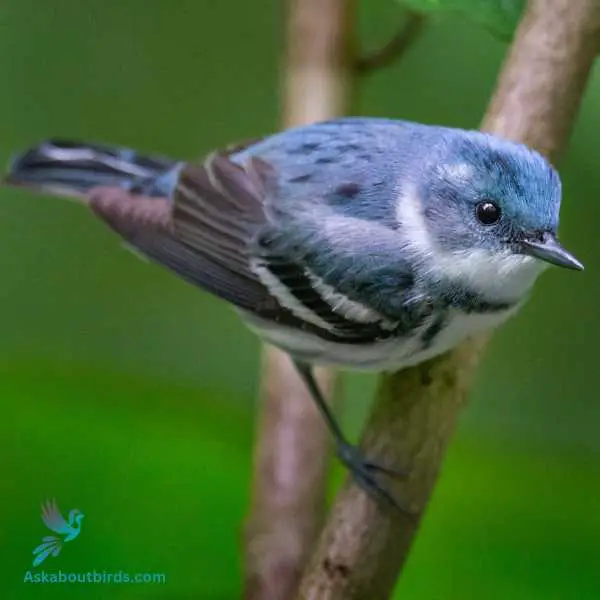
| Trait | Cerulean Warbler |
|---|---|
| Scientific Name | Setophaga cerulea |
| Length | 4.5 inches |
| Wingspan | 7.9-8.7 inches |
| Weight | 0.3-0.4 ounces |
The Cerulean Warbler is a striking songbird known for its sky-blue plumage and flitting movements in the forest canopy.
Appearance: Males boast a vibrant cerulean blue color on their upperparts, with streaked underparts, and a black necklace. Females have a more subdued bluish-green hue and lack the prominent black markings seen in males.
Diet: The diet of the Cerulean Warbler is predominantly made up of insects and spiders. They actively forage high in the treetops, gracefully maneuvering through leaves and branches.
Reproduction: Cerulean Warblers nest in the upper branches of tall deciduous trees. The female weaves a shallow cup-shaped nest and lays a clutch of 3-5 eggs.
Blue-winged Warbler
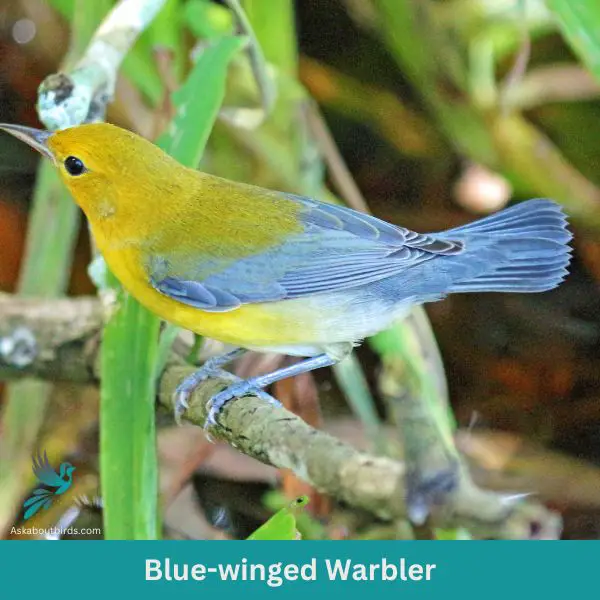
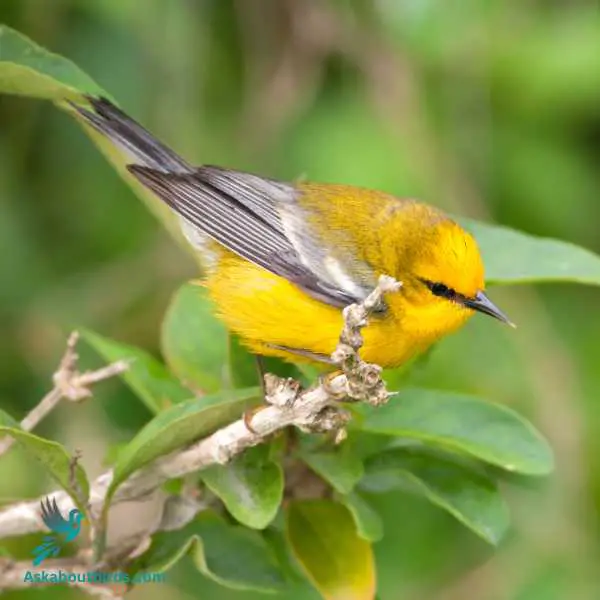
| Trait | Blue-winged Warbler |
|---|---|
| Scientific Name | Vermivora cyanoptera |
| Length | 4.3-4.7 inches |
| Wingspan | 6.7-7.5 inches |
| Weight | 0.3-0.4 ounces |
The Blue-winged Warbler is a vibrant songbird that stands out with its lemon-yellow coloring and buzzing song.
Appearance: This warbler displays a brilliant yellow body contrasted by blue-gray wings and a slim, black line through the eyes. The wings also feature two white wing bars.
Diet: The diet of the Blue-winged Warbler primarily consists of insects and spiders. They actively forage in shrubs and low trees, picking off their prey from the foliage.
Reproduction: Blue-winged Warblers build their nests on or near the ground, using grasses and other fine materials. The female lays a clutch of 4-6 eggs, which she incubates.
Blue-headed Vireo
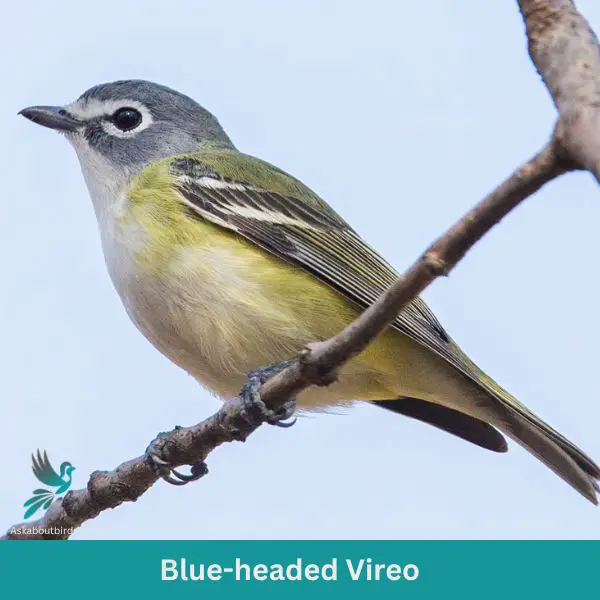
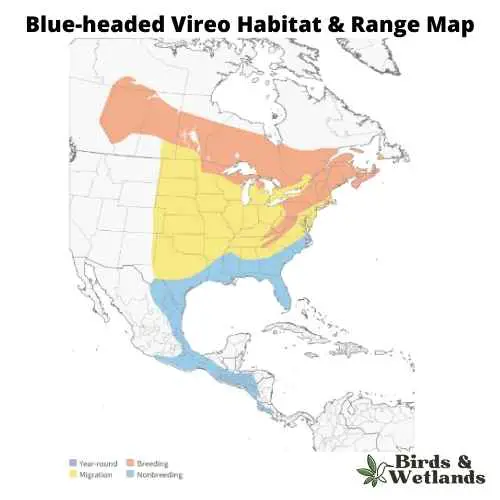
| Trait | Blue-headed Vireo |
|---|---|
| Scientific Name | Vireo solitarius |
| Length | 5-5.5 inches |
| Wingspan | 7.9-9.8 inches |
| Weight | 0.4-0.6 ounces |
The Blue-headed Vireo is a songbird recognized for its sharp and clear song as well as its distinct coloration.
Appearance: It has a blue-gray head and nape, contrasting sharply with its white throat and belly. A white eye ring combined with two white wing bars and yellowish flanks further accentuate its appearance.
Diet: The Blue-headed Vireo feeds mainly on insects and spiders. It often forages in the forest canopy, picking prey off leaves and twigs.
Reproduction: The female constructs a cup-shaped nest made of twigs, bark, and spiderwebs, often placed in the fork of a tree branch. Typically, she lays a clutch of 3-5 eggs. Both parents share the responsibility of incubating the eggs and feeding the chicks.
Belted Kingfisher

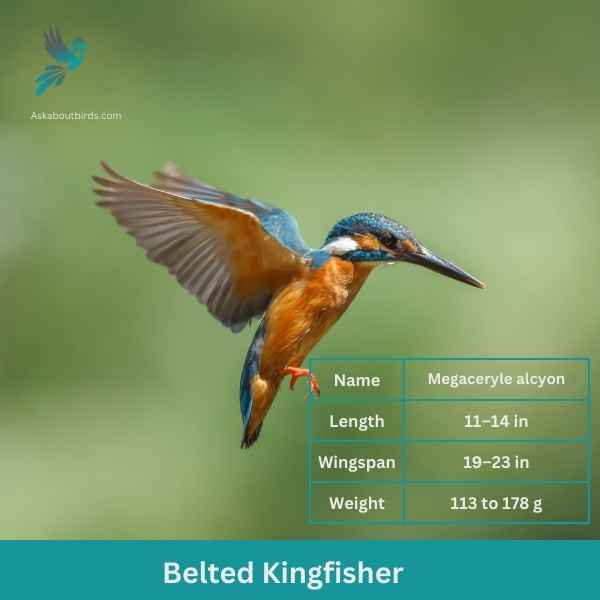
| Feature | Measurement |
|---|---|
| Scientific Name | Megaceryle alcyon |
| Length | 11–14 in |
| Wingspan | 19–23 in |
| Weight | 113 to 178 g |
The Belted Kingfisher is a distinctive and easily recognizable bird, frequently observed near water bodies, where it can be seen diving headfirst to catch prey.
Appearance: Sporting a prominent crest, the Belted Kingfisher has a slate blue-gray upper body and white underparts. Males possess a single blue band across their white chests, while females have an additional rufous band, making them one of the few bird species where females are more brightly colored than males. Their bill is long, sharp, and dagger-like.
Diet: As expert fishers, Belted Kingfishers mainly prey on small fish, but they’ll also consume crustaceans, insects, and amphibians. They’re known for their hunting tactic of hovering over water, spotting their prey, and then diving swiftly to snatch it.
Reproduction: Belted Kingfishers nest in burrows which they excavate in sandy or earthen banks, usually adjacent to water. The tunnel can be anywhere from 3 to 6 feet long, ending in a chamber. Within this chamber, the female lays a clutch of 5 to 8 white eggs.
Where to Spot Mississippi’s Blue Birds
Discover the best spots in Mississippi for blue bird watching in this curated list of locations, each with its unique avian residents and migratory visitors.
- Noxubee National Wildlife Refuge: Located in the east-central part of the state, this refuge is home to a variety of habitats from wetlands to hardwood forests. It is a haven for blue birds and other wildlife, making it a must-visit location for bird watchers.
- Delta National Forest: Situated in the Mississippi Delta region, this national forest offers a range of habitats that attract a diversity of bird species, including several species of blue birds.
- Gulf Islands National Seashore: This coastal park, stretching along the Gulf of Mexico, offers a unique habitat that attracts both coastal and migratory birds, including various species of blue birds.
- Strawberry Plains Audubon Center: Located in Holly Springs, this center is not only known for its efforts in conservation but also as a hotspot for bird watching, with a variety of habitats that attract an array of bird species.
- LeFleur’s Bluff State Park: Situated in the heart of Jackson, this state park offers a mix of forested areas and water bodies that provide a habitat for a variety of bird species, making it an accessible location for bird watching within the city.
| Neighboring States | Best Spots for Blue Birds |
|---|---|
| Alabama’s Blue Birds | 1. Wheeler National Wildlife Refuge 2. Oak Mountain State Park 3. Eufaula National Wildlife Refuge |
| Arkansas’s Blue Birds | 1. Hot Springs National Park 2. Buffalo National River 3. White River National Wildlife Refuge |
| Louisiana’s Blue Birds | 1. Sabine National Wildlife Refuge 2. Bayou Sauvage National Wildlife Refuge 3. Atchafalaya National Wildlife Refuge |
| Tennessee’s Blue Birds | 1. Great Smoky Mountains National Park 2. Reelfoot Lake State Park 3. Radnor Lake State Park |
FAQs on Blue Bird Species Found in Mississippi
Do purple martins eat insects?
Purple martins are a favorite among bird watchers in South America and other regions’ range maps. A key reason is their diet, which primarily consists of insects. These tiny birds are excellent fliers and catch insects in mid-air. Having purple martins around can help control insect populations during the spring and summer months, which is particularly beneficial in areas with high mosquito and other pest populations. Not only do they eat insects, they also eat spiders as part of their diet.
What are the characteristics of Blue Jays?
Blue Jays are large, colorful birds with bright blue feathers on their backs and wings, white bellies, and a distinctive royal blue crest on their heads. They have black bars on their pointed wings and tail, a black necklace, and a face with varying shades of blue. Blue Jays are intelligent and social birds, often found in small family groups, especially during the breeding season when they are raising young birds. They have a wide variety of calls and can even mimic the calls of other fascinating bird species.
Do barn swallows visit bird feeders?
Barn swallows have a diet that primarily consists of insects which they catch in flight. Therefore, they are not typically visitors to bird feeder, which often contain sunflower seeds, nuts, and fruits. Their preferred foraging areas are scattered trees, open fields and spaces where they can easily swoop and catch their prey. While a few birds like the downy woodpecker and the Carolina chickadee might visit bird feeders for black oil sunflower seeds or other treats, barn swallows generally do not as they do not eat sunflower seeds or fruits.
What are the primary characteristics of the Mourning Dove?
The Mourning Dove, one of the most common backyard birds, is a medium-sized bird with a light greyish-brown body, black spots on its wings, and a tail with white tips. It has a characteristic gentle, mournful call that sounds like a lament, which is how it got its name. Mourning Doves are birds typically live and are found across North America, from urban areas like golf courses to mixed forests and deserts. Their diet consists mostly of seeds, but they also eat berries and fruits. They are often seen foraging on the ground or visiting bird feeders in backyards.

